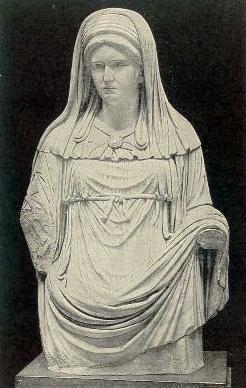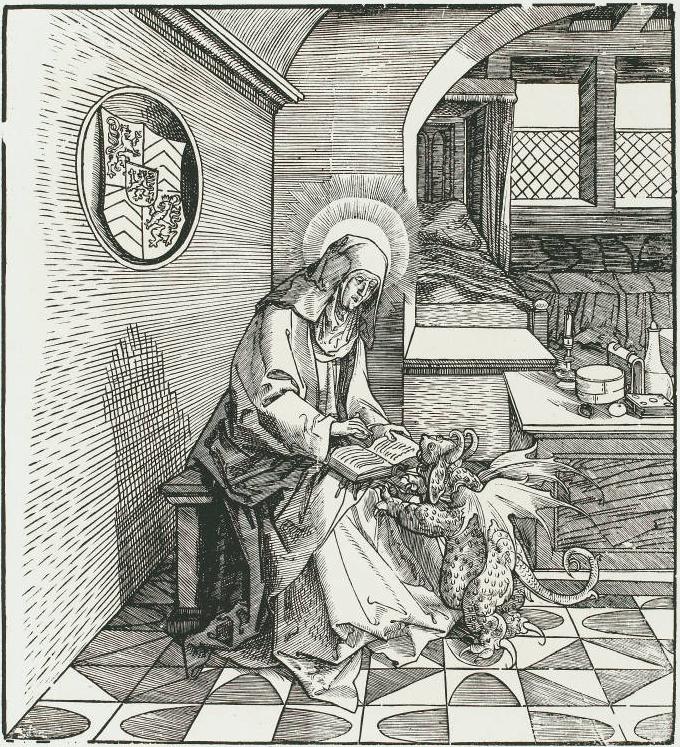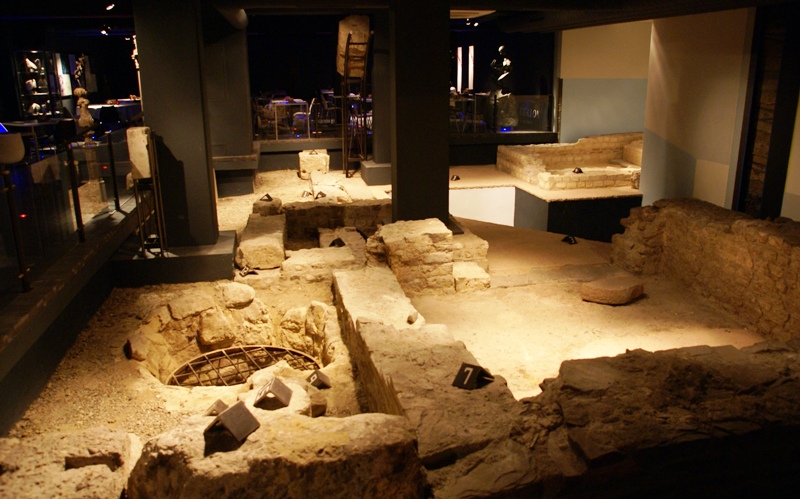|
Aubert Of Cambrai
Aubert of Cambrai () or Aubertus was a Merovingian Bishop of Cambrai and Arras and a Frankish saint. Biography Aubert of Cambrai was born around 600 AD in Austrasia, Francia. Aubert was consecrated as the bishop of the united sees of Arras and Cambrai on 24 March 633 AD. He succeeded Aldebert, bishop of Cambrai-Arras. Bishop Aubert promoted religion and the study of holy texts in Hainaut and Flanders. Through his influence, many nobles were Christianized, and King Dagobert became a major supporter of the Christian Church.The Biographical Dictionary of the Society for the Diffusion of Useful Knowledge--. (1844). United Kingdom: Longman, Brown, Green, and Longmans. St. Landelin was entrusted to his care and was educated in learning and piety by St. Aubert. The bishop of Cambrai gave his benediction to St. Ghislain and blessed his hermitage (now Saint-Ghislain) on the Haine in the pagus Hainoensis. St. Aubert bestowed the religious habit upon Count of Hainaut Vincent Madelgariu ... [...More Info...] [...Related Items...] OR: [Wikipedia] [Google] [Baidu] |
Saint
In religious belief, a saint is a person who is recognized as having an exceptional degree of holiness, likeness, or closeness to God. However, the use of the term ''saint'' depends on the context and denomination. In Catholic, Eastern Orthodox, Anglican, Oriental Orthodox, and Lutheran doctrine, all of their faithful deceased in Heaven are considered to be saints, but some are considered worthy of greater honor or emulation. Official ecclesiastical recognition, and consequently a public cult of veneration, is conferred on some denominational saints through the process of canonization in the Catholic Church or glorification in the Eastern Orthodox Church after their approval. While the English word ''saint'' originated in Christianity, historians of religion tend to use the appellation "in a more general way to refer to the state of special holiness that many religions attribute to certain people", referring to the Jewish tzadik, the Islamic walī, the Hindu rishi or ... [...More Info...] [...Related Items...] OR: [Wikipedia] [Google] [Baidu] |
Saint Ghislain
Saint Ghislain (died 9 October 680) was a confessor and anchorite in Belgium. He died at the town named after him, Saint-Ghislain. Life He was probably of Germanic origin. Ghislain lived in the province of Hainaut in the time of Amandus (d. 679) and saints Waltrude, Aldegonde, and Amalberga of Maubeuge. With two disciples, Lambert and Berler, he made a clearing in the vicinity of ''Castrilocus'' (now Mons, in Hainault), taking up later his abode at a place called ''Ursidongus'', where he built an oratory or chapel dedicated to Saint Peter and Paul the Apostle.Van der Essen, Léon. "St. Ghislain." The Catholic Encyclopedia Vol. 6. New York: Robert Appleton Company, 1909. 3 December 2021 |
Veil
A veil is an article of clothing or hanging cloth that is intended to cover some part of the head or face, or an object of some significance. Veiling has a long history in European, Asian, and African societies. The practice has been prominent in different forms in Judaism, Christianity, and Islam. The practice of veiling is especially associated with women and sacred objects, though in some cultures, it is men, rather than women, who are expected to wear a veil. Besides its enduring religious significance, veiling continues to play a role in some modern secular contexts, such as wedding customs. Etymology The English word ''veil'' ultimately originates from Latin '' vēlum'', which also means "sail," from Proto-Indo-European ''*wegʰslom'', from the verbal root ''*wegʰ-'' "to drive, to move or ride in a vehicle" (compare ''way'' and '' wain'') and the tool/instrument suffix ''*-slo-'', because the sail makes the ship move. Compare the diminutive form '' vexillum'', and the ... [...More Info...] [...Related Items...] OR: [Wikipedia] [Google] [Baidu] |
Lobbes Abbey
Lobbes Abbey was a Benedictine monastery in Wallonia in the municipality of Lobbes, Hainaut, Belgium. The abbey played an important role in the religious, political and religious life of the Prince-Bishopric of Liège, especially around the year 1000. The abbey's founding saint is Saint Landelin; four other saints are also connected with the abbey History Foundation The early history of Lobbes Abbey is known in relative detail through the fortunate and unusual survival of its annals. The monastery was founded by Saint Landelin around 645. Landelin was a young man from a well-to-do family in Bapaume, who had lived a sinful life as the head of a band of brigands. After repenting, he founded a monastery at the place where he had committed his sins, on the bank of the river Sambre. The number of monks at the new monastery increased rapidly following its instigation. Landelin continued his duties as abbot until 680, when he resigned from his post and dedicated the rest of his life ... [...More Info...] [...Related Items...] OR: [Wikipedia] [Google] [Baidu] |
Hautmont
Hautmont () is a commune in the Nord department in northern France. It is southwest of the centre of Maubeuge, and has 14,500 residents. On August 3, 2008, a narrow but strong F4 tornado swept through the town, as well as Maubeuge, Neuf-Mesnil and Boussières-sur-Sambre damaging 100s of buildings, 40 of which collapsed. The tornado killed 3 people and injured 17 others. The tornado was part of an outbreak that produced 9 other tornadoes. Population Heraldry International relations Hautmont is twinned with Kalisz in Poland ''(since 1958)''.' See also *Communes of the Nord department The following is a list of the 648 communes of the Nord department of the French Republic. The communes cooperate in the following intercommunalities (as of 2020): [...More Info...] [...Related Items...] OR: [Wikipedia] [Google] [Baidu] |
Maubeuge Abbey
Maubeuge Abbey (french: Abbaye de Maubeuge) was a women's monastery in Maubeuge, in the County of Hainaut, now northern France, close to the modern border with Belgium. It is best known today as the abbey founded by St. Aldegonde, still a popular figure of devotion in the region. It is thought to have possibly been where the young Jan Gossaert, a Renaissance-era painter known as Jan Mabuse, was educated, claimed by some to have been a native of the town of Maubeuge, which grew up around the abbey. History Initially founded as a double monastery, that is, a community of both men and women, this abbey was founded in 661 for the care of the sick by the young Aldegonde, who was abbess there until her death in 684, and was also buried there. She was succeeded as abbess by her two nieces, first Aldetrudis and then Madelberte. The abbey soon became a Benedictine monastery solely of nuns. St. Amalberga of Maubeuge became a member of the community later in the eighth century. Maubeuge ... [...More Info...] [...Related Items...] OR: [Wikipedia] [Google] [Baidu] |
Maastricht
Maastricht ( , , ; li, Mestreech ; french: Maestricht ; es, Mastrique ) is a city and a municipality in the southeastern Netherlands. It is the capital and largest city of the province of Limburg. Maastricht is located on both sides of the Meuse ( nl, Maas), at the point where the Jeker joins it. Mount Saint Peter (''Sint-Pietersberg'') is largely situated within the city's municipal borders. Maastricht is about 175 km south east of the capital Amsterdam and 65 km from Eindhoven; it is adjacent to the border with Belgium and is part of the Meuse-Rhine Euroregion, an international metropolis with a population of about 3.9 million, which includes the nearby German and Belgian cities of Aachen, Liège and Hasselt. Maastricht developed from a Roman settlement (''Trajectum ad Mosam'') to a medieval religious centre. In the 16th century it became a garrison town and in the 19th century an early industrial centre. Today, the city is a thriving cultural and regional hub. It ... [...More Info...] [...Related Items...] OR: [Wikipedia] [Google] [Baidu] |
Amandus
Amandus ( 584 – 679), commonly called Saint Amand, was a bishop of Tongeren-Maastricht and one of the great Christian missionaries of Flanders. He is venerated as a saint, particularly in France and Belgium. Life The chief source of details of his life is the ''Vita Sancti Amandi'', an eighth-century text attributed to Beaudemond ( la, Baudemundus). The vita was expanded by Philippe, abbot of Aumône. According to this biography, Amand was born in Lower Poitou. He was of noble birth but at the age of twenty, he became a monk on the Île d'Yeu, against the wishes of his family. His father threatened to disinherit him if he did not return home. From there Amandus went to Bourges and became a pupil of bishop Austregisilus. There he lived in solitude in a cell for fifteen years, living on no more than bread and water.Campbell, Thomas (1907). "St. Amandus", ''The Catholic Encyclopedia''. Vol. 1. New York: Robert Appleton Company. Humbert of Maroilles was of a noble family and t ... [...More Info...] [...Related Items...] OR: [Wikipedia] [Google] [Baidu] |
Saint Waltrude
Saint Waltrude (french: Waudru; nl, Waldetrudis; german: Waltraud; la, Valdetrudis, Valtrudis, Waltrudis; died April 9, 688 AD) is the patron saint of Mons, Belgium, where she is known in French as Sainte Waudru, and of Herentals, Belgium, where she is known in Dutch as Sint-Waldetrudis or -Waltrudis. Both cities boast a large medieval church that bears her name. Life Waltrude was born in Cousolre in northern France, to a wealthy and influential noble family. According to Alban Butler, she was a sister to Aldegonde, foundress of Maubeuge Abbey. Waltrude married Vincent Madelgarius, the Count of Hainault. According to scholar John O'Hanlon, Madelgarius (or Maelceadar) was originally from Ireland. They had four children: * Aldetrude, abbess of Maubeuge Abbey * Landry of Paris, Bishop of Paris * Madelberte of Maubeuge, succeeded Aldetrude as abbess of Mauberge * Dentelin After her husband retired to an abbey, she herself became a nun in 656. She founded her own convent (Sainte-Wa ... [...More Info...] [...Related Items...] OR: [Wikipedia] [Google] [Baidu] |
Vincent Madelgarius
Vincent Madelgarius, aka ''Maelceadar'', Benedictine monk, died 677. His feast day is September 20. Belgian accounts Belgian sources state that Vincent Madelgarus was born in Strépy, Belgium, sometime in the late 6th or early 7th century; died 677 in Soignies; and was a Benedictine monk who established two monasteries in Hainaut. One of these was at Hautmont (now in France), the other at Soignies. Madelgarus was sent by Dagobert I to Ireland. His wife was Waltrude. Irish accounts However, according to John O'Hanlon, his real name was Maelceadar (Mael Ceadar), he was a Count of Hainault, and he was a native of Ireland. Speaking of Vincent Madelgarus's daughter, Madelberta, abbess of Maubeuge, O'Hanlon states: ''"because her religious father is held to have sought from Ireland the shores of France, where he was renowned as a warrior, and where he attained the distinction of being known as Count of Hannonia, or Hainault, in reward for his services, as also because with hi ... [...More Info...] [...Related Items...] OR: [Wikipedia] [Google] [Baidu] |
Count Of Hainaut
The Count of Hainaut (; ; ) was the ruler of the county of Hainaut, a historical region in the Low Countries (including the modern countries of Belgium, the Netherlands, Luxembourg and parts of northern France and western Germany). In English-language historical sources, the title is often given the archaic spelling Hainault. List of counts of Hainaut 10th century *(uncertain) Reginar I (d. 915) * Sigard (fl. 902–920), also Count of Liège *(uncertain) Reginar II (r. 920–after 932) *(uncertain) Reginar III (r. before 940–958) * Godfrey I (r. before 958–964), also Duke of Lower Lotharingia * Richar (r. 964–973), also Count of Liège The County of Hainaut was then divided between the counties of Mons and Valenciennes. Counts of Mons *(uncertain) Renaud (r. 973) * Godfrey II "the captive" (r. 974–998) *(uncertain) Reginar IV (r. 998–1013) *Reginar V (r. 1013–1039), acquired the southern part of the Brabant province around 1024 *Herman (r. 1039–1051), married ... [...More Info...] [...Related Items...] OR: [Wikipedia] [Google] [Baidu] |
Pagus Of Hainaut
The County of Hainaut (french: Comté de Hainaut; nl, Graafschap Henegouwen; la, comitatus hanoniensis), sometimes spelled Hainault, was a territorial lordship within the medieval Holy Roman Empire that straddled what is now the border of Belgium and France. Its most important towns included Mons ( nl, Bergen), now in Belgium, and Valenciennes, now in France. The core of the county was named after the river Haine. It stretched southeast to include the '' Avesnois'' region and southwest to the Selle (Scheldt tributary). In the Middle Ages, it also gained control of part of the original ''pagus'' of Brabant to its north and the ''pagus'' of Oosterbant to the east, but they were not part of the old ''pagus'' of Hainaut. In modern terms, the original core of Hainaut consisted of the central part of the Belgian province of Hainaut, and the eastern part of the French ''département'' of Nord (the arrondissements of Avesnes-sur-Helpe and Valenciennes). Hainaut already appeared in ... [...More Info...] [...Related Items...] OR: [Wikipedia] [Google] [Baidu] |





.jpg)
